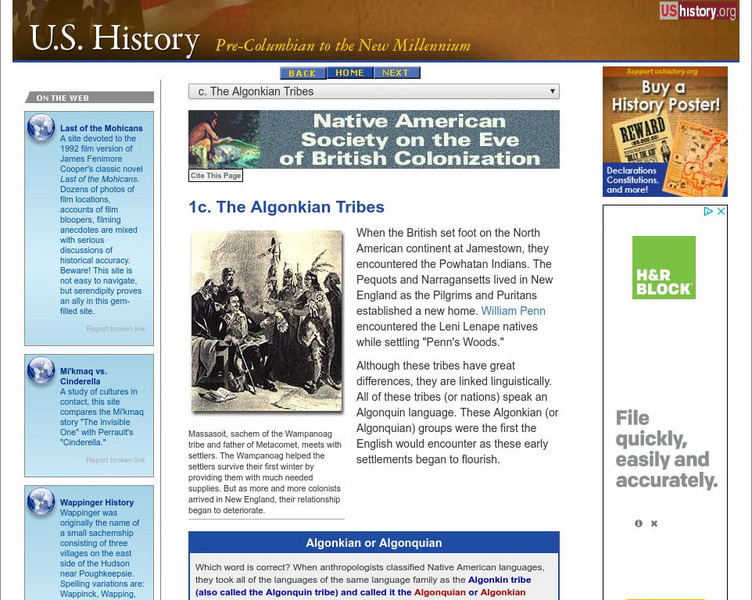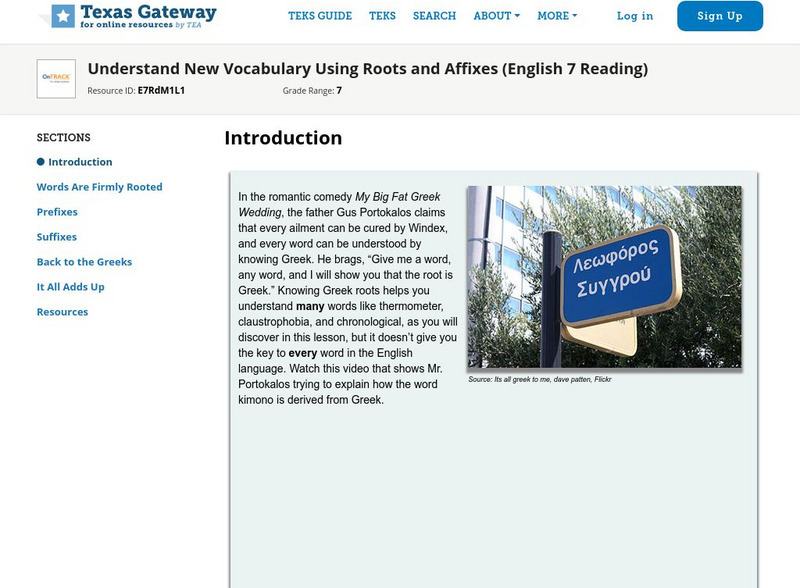University of Washington
University of Washington Libraries: South Asian Oral History Project
hese interviews reflect religious, linguistic, occupational and gender diversity and provide rich insight into changing experiences of South Asians in the Pacific Northwest.
TED Talks
Ted: Ted Ed: Speech Acts: Constative and Performative
When are words just words, and when do words force action? Linguist J.L. Austin divided words into two categories: constatives (words that describe a situation) and performatives (words that incite action). For instance, is a "No...
TED Talks
Ted: Ted Ed: Different Ways of Knowing
Daniel Tammet has linguistic, numerical and visual synesthesia- meaning that his perception of words, numbers and colors are woven together into a new way of perceiving and understanding the world. The author of "Born on a Blue Day,"...
TED Talks
Ted: Ted Ed: Did Shakespeare Write His Plays?
Some people question whether Shakespeare really wrote the works that bear his name- or whether he even existed at all. Could it be true that the greatest writer in the English language was as fictional as his plays? Natalya St. Clair and...
Other
Saudi Aramco World: Decorated Houses of Nubia
In a special article written by Louis Werner and photographed by Michael Nelson, "The Decorated Houses of Nubia" examines the region of Upper Nubia in Sudan which maintains its linguistic and cultural differences with great pride.
Independence Hall Association
U.s. History: The Algonkian Tribes
A good look at the Algonkian tribes that ranged along the Atlantic coast, although different in many ways, but connected linguistically. Read about the Wampanoags, who met the Pilgrims, and the Powhatans, who helped John Smith and his...
Terres en Vues (Land InSights)
Land in Sights: Visual Arts: Sylvain Rivard
View works by Sylvain Rivard and learn how his background and linguistic skills make him an invaluable resource within the First Nations culture.
Rock and Roll Hall of Fame
Rock & Roll Hall of Fame: Sti Lesson 17: Irony Made Understandable
One of the more difficult literary concepts to teach is irony, especially ironic point of view. Not only do students often miss the subtle linguistic clues, they become distracted by the issue of author's intent. Whether it's the classic...
Texas Education Agency
Texas Gateway: Understand New Vocabulary Using Roots and Affixes
You will learn how to determine the meaning of grade-level academic English words derived from Latin, Greek, or other linguistic roots and affixes.
Texas Education Agency
Texas Gateway: Applying Word Study Strategies (English I Reading)
Apply previous lessons, (1) Linguistic Roots and Affixes, (2) Denotation and Connotation, (3) Origins and Meanings of Foreign Words, (4) Cognates, and (5) Reference Materials, to improve fluency and comprehension.
TED Talks
Ted: Ted Ed: Does Grammar Matter?
It can be hard sometimes, when speaking, to remember all of the grammatical rules that guide us when we're writing. When is it right to say "the dog and me" and when should it be "the dog and I"? Does it even matter? Andreea S. Calude...
Countries and Their Cultures
Countries and Their Cultures: Yoruk
The Yoruk are an ethnic-tribal grouping found widely throughout Turkey but primarily along the Aegean and Mediterranean coasts. The Yoruk are not linguistically distinct from most of the rural populations among whom they live. They speak...
Countries and Their Cultures
Countries and Their Cultures: Tropical Forest Foragers
The term "tropical-forest foragers," or "pygmies," refers to ethno-linguistically diverse peoples distributed across the forested regions of Central Africa who are particularly short in stature and who traditionally have lived by...
Countries and Their Cultures
Countries and Their Cultures: Turks
Ethnically, the Turks are a cultural group united by a common language, but the term "Turk" has no clearly defined racial significance; it can be properly applied to those communities historically and linguistically connected to the...
Countries and Their Cultures
Countries and Their Cultures: San Speaking Peoples
San-speaking peoples do not constitute an ethnic group in the usual sense. The most widely known are those who call themselves "Zhu I oasi" (!Kung or Juwasi in most ethnographies), although the other peoples mentioned above have also...
Countries and Their Cultures
Countries and Their Cultures: Persians
Persians are an ethnic group defined primarily by language and location. The Persian language, also known as Farsi, which linguists classify in the Indo-Iranian Branch of the Indo-European Language Family, had about 23 million speakers...
Countries and Their Cultures
Countries and Their Cultures: Pedi
"Pedi," in its broadest sense, has been a cultural/linguistic term. It was previously used to describe the entire set of people speaking various dialects of the Sotho language who live in the northern Transvaal of South Africa. More...
Countries and Their Cultures
Countries and Their Cultures: Ibibio
The name "Ibibio" identifies the largest subdivision of people living in southeastern Nigeria, in Akwa Ibom State, and it is generally accepted and used for both ethnic and linguistic descriptions. Like their Igbo neighbors, the Ibibio...
Countries and Their Cultures
Countries and Their Cultures: Karamojong
The Karamojong are a pastoral group who inhabit the plateau region of Uganda. Linguistically, the Karamojong belong to the Central Group of the Nilote Language Family, which also includes several neighboring groups that speak a mutually...
Countries and Their Cultures
Countries and Their Cultures: Jews of Iran
Until mass emigration began in 1948, Jews constituted one of the largest and longest-settled non-Muslim populations in Iran. Dispersed in every city and town in the country, Iranian Jews were almost always a minority except in a few...
Countries and Their Cultures
Countries and Their Cultures: Mandaeans
The Mandaeans are a group of people defined primarily by their religious affiliation, which differs from that of their mainly Muslim neighbors in Iran and Iraq. Today they live along the rivers and waterways of southern Iraq and...
Countries and Their Cultures
Countries and Their Cultures: Nuristanis
The area known as Nuristan is located at the southern end of the Hindu Kush mountain range in Afghanistan. There are limited amounts of arable land in the Hindu Kush, but there are abundant amounts of pastureland well suited for...
Smithsonian Institution
Smithsonian Institution: Anthropology on the Internet for K 12
The Smithsonian institute offers this site by Robert L. Humphrey titled, "Anthropology on the Internet for K-12." Includes excellent information on the different branches of anthropology, careers, exhibits, publications, and more.
ABCya
Ab Cya: Antonyms, Synonyms & Homonyms
If you need to brush up on antonyms, synonyms, and homonyms check out this game. Practice identifying these three tricky types of words by matching the identified words on the frog with the words on the correct flies.
Other popular searches
- Linguistics Activities
- Anthropology Linguistics
- English Linguistics
- Teaching Linguistics
- Spanish Linguistics
- Linguistics and Slang
- Linguistics and Culture
- Linguistics in Science
- Applied Linguistics
- Linguistics Language
- Teaching Linguistics to Ell
- Linguistics Nell













